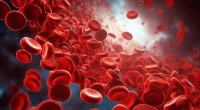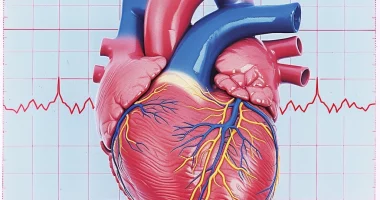Multiple myeloma
What is multiple myeloma?
Multiple myeloma is a form of chronic lymphoblastic leukemia characterized by bone marrow involvement, bone destruction, and the production of single immunoglobulins. Blood oncopathology affects the flat bones, spine, and kidneys. Multiple myeloma leads to severe immune dysfunction. The disease is considered quite rare. Pathology is detected in 4-6 people per 100 thousand people, more often in the elderly. It is characteristic that representatives of the Negroid race are twice as often ill as Europeans.
The disease is based on an alteration in the properties of plasmocytes (blood cells that are a type of white blood cell). A defect in the DNA of these immune cells leads to impaired division and maturation. As a result, many atypical cells (multinucleated, pale, large in size, and prone to uncontrolled division) appear in the blood. Such cells live longer than normal cells. They do not perform any functions but colonize the bone marrow, displacing functionally active tissue and provoking disorders of hematopoiesis. In addition, such abnormal plasmocytes produce monoclonal proteins utilized by the kidneys, which experience an excessive load.
In multiple myeloma, bone tissue is destroyed, which provokes a sharp increase in the level of calcium in the blood, which leads to damage to internal organs (kidneys, lungs, digestive tract, etc.). The consequences of myeloma disease are serious – softening of bones, kidney failure, anemia, and decreased tolerance to bacterial and viral infections.
Depending on the peculiarities of tumor spreading, multiple nodular and diffuse forms of multiple myeloma are distinguished. Staging is carried out considering the tumor mass (the first stage corresponds to a small mass, the second – medium, and the third – large).
The prognosis for multiple myeloma is unfavorable. The disease has no radical treatment methods. Modern techniques can slow its progression and prolong the life of the patient. Life expectancy depends on the timeliness of diagnosis and the start of treatment.
Symptoms of multiple myeloma
The manifestations of the disease are due to the effect of the tumor on various organs and systems. The following syndromes are distinguished:
- Bone destruction, or osteolysis. It is manifested by bone pain. Destruction of bone tissue provokes abnormal fractures in the absence of a damaging factor or with minimal impact. Often, multiple myeloma provokes intense pain in the chest, back, and extremities.
- Hypercalcemia. Increased calcium levels in the blood cause severe thirst, constipation, confusion, nausea, vomiting, and drowsiness.
- Changes in the rheological properties of the blood. An increase in blood viscosity characterizes multiple myeloma. Disturbance of microcirculation does not have typical symptomatology. It may manifest as a feeling of stunned, visual disturbances, etc.
- Dysfunction of hematopoiesis. There is bleeding, weakness, etc.
- Damage to other organs due to myeloma amyloidosis. The accumulation of specific proteins in various organs leads to partial or complete loss of their functions. The kidneys, heart, cornea, joints, and dermis are affected by multiple myeloma.
- Decreased immunity. Deficiency of functional defense cells provokes frequent relapses of infectious diseases. For example, patients with multiple myeloma often get herpes zoster.
Changes in the vertebrae’s structure, shape, and position cause a diverse range of neurological symptoms. Among the signs of multiple myeloma, we can distinguish the following: shooting pains, impaired limb function, paresis, paralysis, etc.
Causes of multiple myeloma
A mutation in the DNA of B-lymphocytes causes the disease. The exact causes of the change in genetic material have yet to be established. Possible predisposing factors include:
- age-related changes;
- being male and of the Negroid race;
- monoclonal gammopathy (disorders of immunoglobulin synthesis);
- immunodeficiency states (due to medications or primary diseases);
- myeloma disease in blood relatives;
- exposure to ionizing radiation;
- handling toxic substances;
- autoimmune diseases;
- obesity.
Multiple myeloma is currently considered a poorly understood cancer. The search for causes that would allow effective treatment of this tumor continues.
Diagnosis of multiple myeloma
The disease is diagnosed incidentally in the early stages, usually as part of a screening examination for anemia. Myeloma is suspected when there are abnormalities in the general (decreased hemoglobin and increased erythrocyte sedimentation rate) and biochemical blood counts (hypercalcemia and hyperproteinemia combined with decreased albumin concentration).
If multiple myeloma is suspected, a comprehensive examination is performed, which includes the following measures:
- physical examination with palpatory examination of painful areas;
- bone X-ray;
- laboratory diagnostics (general blood and urine analysis, blood biochemistry, electrophoretic identification of blood and urine protein, etc.);
- positron emission tomography (to determine the location and size of tumors);
- CT and MRI scans of bones, joints, and internal organs;
- bone marrow biopsy (reflects plasma cell count of bone marrow, which is an essential diagnostic criterion).
The following criteria are grounds for the diagnosis of multiple myeloma: bone marrow plasma cell count of more than 10%, presence of monoclonal protein in blood and urine in combination with internal organ damage, hypercalcemia, anemia, and detection of foci of bone tissue thinning or diffuse osteoporosis.
The pathology is differentiated with benign monoclonal gammopathy and other oncological diseases (lymphocytic leukemia, lymphoma, bone metastases of tumors of internal organs, etc.).
Treatment of multiple myeloma
Therapy tactics are aimed at suppressing the growth and secretory activity of the tumor, as well as prolonging and improving the patient’s quality of life. The treatment regimen is selected on an individual basis, taking into account the size, location, and activity of tumors.
In a low-intensity process, characterized by the absence of symptoms, it is possible to use a wait-and-see approach. In this case, the patient undergoes regular examinations to monitor the dynamics of the disease.
To slow the progression of pathology, the following methods are used:
- Chemotherapy. It involves using substances that destroy or inhibit the division of malignant cells.
- High-dose polychemotherapy. For treatment purposes, high doses of chemotherapeutic agents with different mechanisms of action are combined to increase the overall effectiveness of the regimen.
- Stem cell transplantation. The patient is transplanted with their own or donor stem cells to restore bone marrow functions partially. The method complements other treatment options and can significantly prolong the life of patients with multiple myeloma.
- Immune therapy. It involves using interferons to suppress clonal malignant cells and compensate for immune system dysfunction.
- Radiation therapy. It implies exposure of pathological foci to ionizing radiation to destroy them.
- Surgical treatment. In most cases, it involves the treatment of fractures. Surgery is symptomatic treatment of complications of the disease.
- Therapeutic correction of complications. It involves control of hypercalcemia, transfusion of erythroblasts, treatment of infectious diseases, compensation of renal failure with plasmapheresis and hemodialysis, etc.
Over the last twenty years, advances have been made in treating multiple myeloma. The prognosis of survival, even for patients with an unfavorable course of the disease, is currently 15 months. The average survival rate is about five years. With early diagnosis, good response to chemotherapy, and its competent combination with other methods, it is possible to achieve a relapse-free period of 5-10 years, sometimes longer.
All these treatment options are available in more than 750 hospitals worldwide (https://doctor.global/results/diseases/multiple-myeloma). For example, chemotherapy for multiple myeloma is performed in 26 clinics across Turkey (https://doctor.global/results/asia/turkey/all-cities/all-specializations/procedures/chemotherapy-for-myeloma).
Prevention
There are no specific methods to prevent the development of multiple myeloma. Taking into account risk factors, preventive measures include:
- leading a healthy lifestyle;
- rational nutrition and weight control;
- minimizing contact with toxic substances and ionizing radiation.
People with an unfavorable family history are recommended to undergo regular preventive examinations. People over 50 should undergo annual general and biochemical blood tests.
Rehabilitation after surgical treatment
After bone marrow transplantation, the patient remains in the hospital until the patient’s condition is completely stabilized. Observation, symptomatic treatment, and measures to prevent complications are carried out at this stage. In the first months after surgery, a doctor should see the patient weekly and undergo regular tests. For convenience, it is recommended to organize accommodation near the clinic.Special requirements are placed on the living environment. Cleanliness, sterility, and minimizing traumatic factors are essential in healing. Outside the home, the patient is advised to use personal protective equipment (mask, gloves, antiseptics, etc.), especially during COVID-19.




